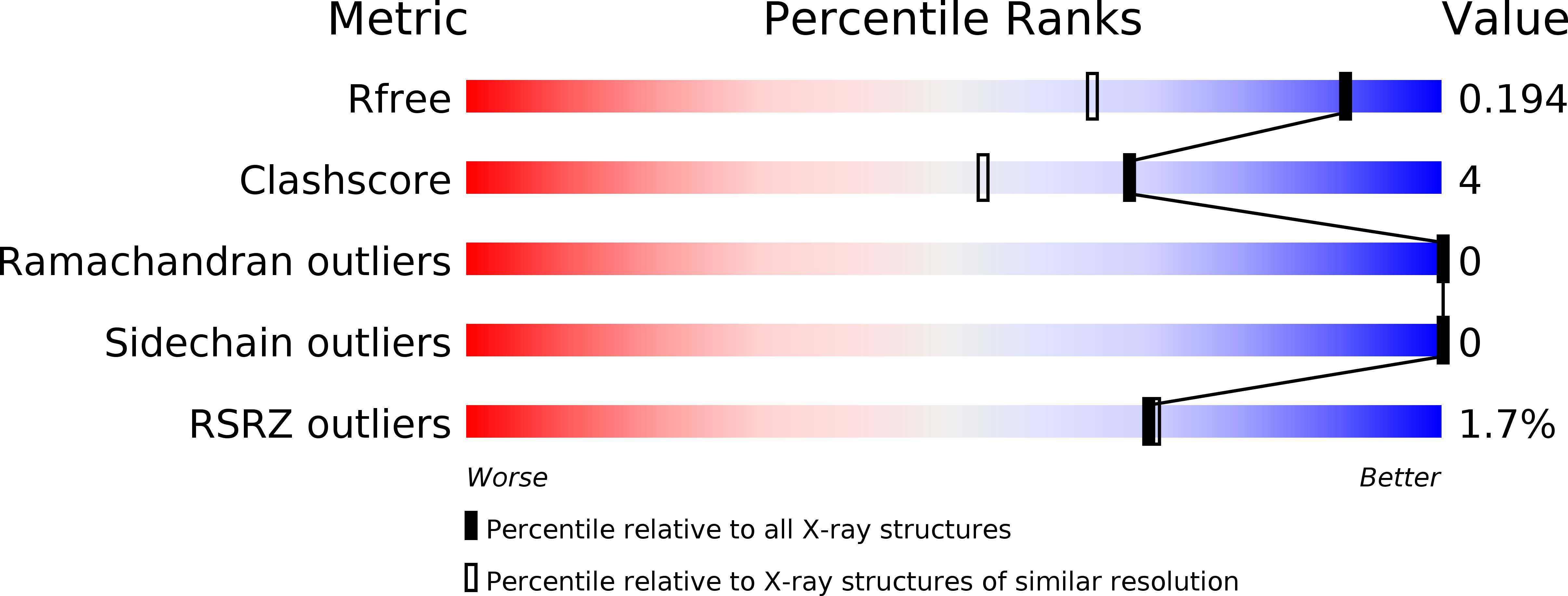
Deposition Date
2019-02-12
Release Date
2019-08-21
Last Version Date
2024-01-24
Entry Detail
PDB ID:
6QOB
Keywords:
Title:
Crystal structure of ribonucleotide reductase NrdF from Bacillus anthracis with partially oxidised di-iron metallocofactor
Biological Source:
Source Organism:
Bacillus anthracis (Taxon ID: 1392)
Host Organism:
Method Details:
Experimental Method:
Resolution:
1.46 Å
R-Value Free:
0.19
R-Value Work:
0.16
R-Value Observed:
0.17
Space Group:
P 1 21 1


